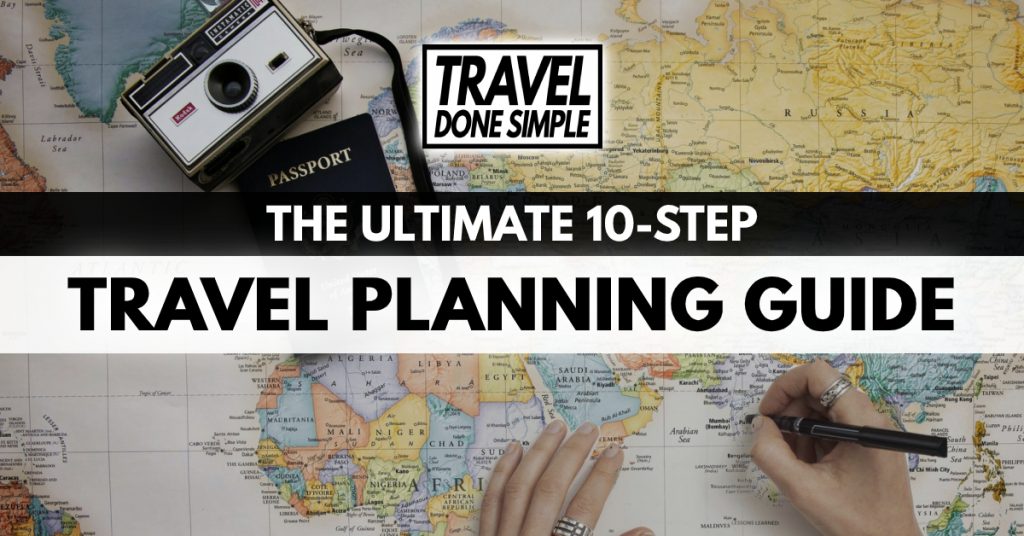Travel planning can be complicated and exhausting, that’s why lots of people still resort to travel agents. But in this guide, I’m going to show you that it’s actually way easier than you think in 10 simple and straightforward steps!
So if you have never planned a trip before or you just want to make sure you haven’t missed anything when planning your upcoming one, then this guide is for you.
On this page, I’m going to list out everything you need to do when planning out your travels in a step-by-step format that is easy to follow and will get you off your computer and on your way to your dream vacation in no time.
Step 1: Pick Your Destination

The absolute first step in any travel plan is to pick a destination that’s within your budget and suits the type of trip you’re looking for.
Looking for a relaxing beach getaway?
Want to experience culture shock in a completely different part of the world?
Dreaming about seeing exotic animals in their natural habitat?
What about all those natural and man-made monuments that you always see on postcards?
There is a destination out there for everyone and you can learn more about them in the Destination Guides.
What's your budget?
Depending on your budget, some destinations may be out of reach for now (I’m looking at you, Norway!) so this is a very important factor when picking where to go.
If you have a lower budget or you just want to get the biggest bang for your buck, check out my Guide to the Cheapest Destinations.
If your budget is higher, pick a destination that makes the most sense for you and what you’re looking to get out of the trip.
How much time will you have?
Depending on how much time you have, you may get more out of your trip if you spend less time getting there.
If you only have a week, maybe consider picking a destination that is closer to home, but if you have more time available, consider exploring the other side of the world!
The good news is that there is an amazing destination for you no matter which part of the world you’re in.
When do you plan to travel?
Depending on when you plan to travel, the destination you had in mind may not be a good option.
The first time I went to Malaysia, I wanted to visit the Perhentian Islands, but had to change my plans as I was informed that the islands were closed because of the monsoon season!
Make sure you read up about your destinations before deciding on them to know when the high and low seasons are, what weather to expect, if there are any festivals happening at that time, etc. You can find a lot of information about them in the Destination Guides.
The last thing you want is to show up and be disappointed because it’s not what you expected!
What if you're still undecided?
If you’ve read the Destination Guides and still can’t decide, but you’re open to anything, one way I like to find my next destination is to use the Explore Map provided by Google Flights to discover the cheapest flights available to any part of the world! I teach you how to do that in Part 2 of my Guide to Google Flights.
Step 1b: Check for visas & vaccinations
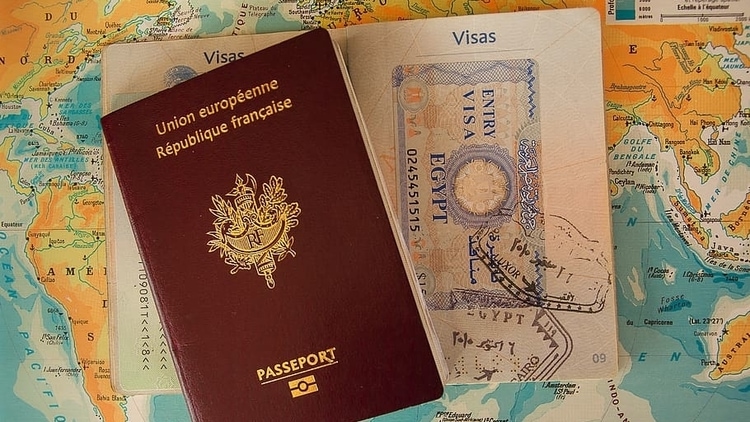
Depending on what passport you own, there may be some countries that you simply won’t be able to enter and others that you will need to get a tourist visa for.
It’s important to know what restrictions your destination may hold and whether you qualify to be able to enter as a tourist. Some visas can also take a lot of time and cost a lot of money to acquire so it’s important to take that into consideration too.
In addition, some countries may require you to get a Yellow Fever vaccine before they allow you to enter, depending on your nationality or where you are traveling from. And in other countries, it may just be highly recommended to get other vaccinations.
Either way, it’s important to know this information before booking anything because if you don’t want to get vaccinated or you are not able to do it in time, you may be better off choosing another destination!
So how do you do this?
The first thing you should do is check if you will need a visa.
I’ve found the best way to do this is to go to Wikipedia and search for “Visa Requirements For _______ Citizens”, inputting your citizenship in the blank space. That page will let you know whether or not you need a visa for every country in the world.
Specific country information can also be found in the Destination Guides.
The second thing you should do is check if you will need any vaccinations.
If your destination is in a developed region such as Europe, North America, East Asia, or Australia/Oceania, you most likely won’t need to worry about this, but if you’re traveling to any other destination, you may need to consider getting vaccinated.
A good resource for travel vaccination recommendations is the CDC’s Traveler’s Health Guide for each country which I provide a link to, along with other information, in its Destination Guide.
The third thing you should do is be prepared to show proof of onward travel.
Many countries around the world try to prevent illegal immigration from people who take advantage of tourist visas by requiring all travelers to provide proof of onward travel to be able to enter the country.
If you booked return flights to your destination and your return flight leaves before your visa expires, then this is not something you need to worry about, but if you only got a one-way flight, then this is something you need to prepare for.
Read more about it including how to to get it in my Guide to Proof of Onward Travel.
And if you do need a visa or vaccination for your trip, make sure to check out my Guide to Visas & Vaccinations to get more information about them. Otherwise, continue to step 2!
Step 2: Figure out your transportation

Now that you’ve got your destination decided on, you’ll need to figure out how you’re going to get there! If you’re not going too far from home, you may not need to fly, but most times you will probably be getting on a plane.
Hint: If you’re not sure what transportation options are available to you, use Rome2Rio to help show you all the methods of transportation that are available between any two destinations in the world!
How do you find the best flights?
Forget Expedia, Travelocity, Kayak or any other online travel agency that you’ve been using. There are only 2 sites that you should be using to find the perfect flights for your trip at the lowest prices and they are Google Flights & Momondo.
Google Flights with all its great features is the best tool for finding the perfect flight itinerary to match your needs and Momondo can save you even more money on the same flights that you find using Google Flights so it’s the best one-two punch in the business.
I show you the process for finding the best flights at the best prices in my Guide to Flights. I also show you how to use Google Flights and Momondo to their full potential in my Guide to Google Flights and Guide to Momondo.
And if you’re traveling within the US or between the US & Central America or the Caribbean, you’ll also need to consider looking at Southwest Airlines as it is the only major US airline that only lets you book from their website.
Check out my guide on Guide to Southwest Airlines to learn how.
What about the other forms of transportation?
Depending on where you’re going and how many destinations you plan to visit, you may need to look into train, bus, or ferry travel as well. You can learn more about all the methods of transportation available including how to find and book them at the best prices in my Guide to Transportation.
And if you’re a budget traveler looking to get to your destination for the absolute cheapest price possible, check out my Guide to Cheap Flight Strategies as well as my Guide to Cheap Transportation.
Step 3: Book your accommodation
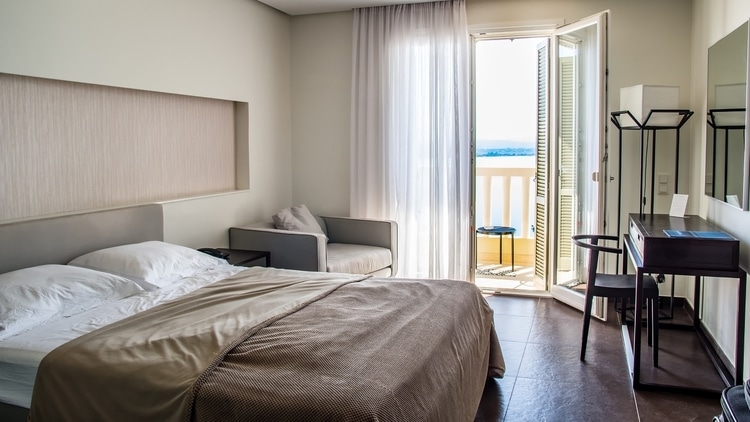
Once you have your transportation figured out, you’ll need to look for a place to stay.
Sometimes it’s good to find your accommodation before booking your transportation because if you’re traveling during a very busy period, you may find that there aren’t any suitable accommodation options available for you since they’re all already booked. Make sure you don’t end up in your destination without anywhere to stay!
What are the options?
The first thing that comes to mind when thinking of places to stay while traveling is the hotel, but there are so many more types of accommodation available these days. I go in detail about them in my Guide to Accommodation, but they essentially come in two types.
The one that hotels fall into is what I consider standard accommodation. This includes:
- Hotels
- Aparthotels
- Guesthouses
- Vacation Homes
- Resorts
Everyone is familiar with the hotel, but maybe less so with aparthotels, guesthouses, vacation homes, and resorts.
– Aparthotels are like hotels in an apartment complex meaning you not only get a bedroom and bathroom, but often a kitchen and living room too.
– Guesthouses, sometimes called bed and breakfasts, are typically where you get a private room in someone’s home that they have converted into a type of casual hotel.
– Vacation homes refer to private and typically secluded properties such as chalets, villas, bungalows, and cabins.
– Resorts are similar to hotels, but usually come with a lot more amenities such as all-inclusive food and drink, several pools, etc.
How do you book them?
Each one comes with its own set of benefits and it’s worth reviewing all of them to decide which is the right type of accommodation for your trip. However, the one thing they all have in common is the way they’re booked.
There is really only one site you should use to find and book your accommodation and that is Booking.com.
Booking.com is the largest accommodation booking website out there. It is super easy to use and it has the best prices in my experience. Pretty much every hotel, guesthouse, and resort in the world can be found there so you can be sure you’ll have lots to choose from.
Learn how to use it and book your accommodation at the best prices in my Guide to Booking Your Accommodation.
What are the other options?
The other forms of accommodation fall into what I consider to be alternative accommodation. This includes:
- Airbnb & Vrbo
- Hostels
- Couchsurfing
– Airbnb has become so mainstream now that it’s probably even considered to be standard by some. If you haven’t heard of Airbnb, it’s like renting a local’s house, apartment, or spare room for your stay. Vrbo is similar, although it focuses more on vacation rentals. They’re a great way to get that home away from home feeling.
If you don’t have an Airbnb account, you can create one using this link and receive up to $46 USD off your first trip! And be sure to check out my Guide to Airbnb & Vrbo for other important information about them.
– Hostels are for the budget travelers and socialites. While private rooms in hostels do exist, they are mostly known for their dorm rooms in which you share a room with anywhere from 3 others to a lot more. Not only a way to save money, they’re also a great way to socialize and get to know other travelers!
My favourite website to book hostels is Hostelworld. Check out my Guide to Hostels for more information about them.
– Couchsurfing is for the most adventurous of travelers. Essentially, it involves sleeping on a local’s couch or even spare room if you’re lucky. You also get to know and hang out with them in their home as if they’re an old friend of yours. It’s a very special form of accommodation that isn’t for everyone, but can be super rewarding for many!
You can find your host on Couchsurfing.com. Make sure to read my Guide to Couchsurfing to know exactly what to expect if you decide to do it!
Which one should you go with?
It all depends on who you’re traveling with, what type of experience you want to have, what your budget is, and where you’re going.
- Visiting Europe for the first time with your partner?
Can’t go wrong with Hotels. - Going to the Caribbean with your family for a relaxing beach getaway?
Look into a Resort. - Backpacking solo in Latin America?
Try Hostels and Couchsurfing. - Touring North America with friends?
Consider staying in Airbnbs.
And if you’re a budget traveler, make sure to check out my Guide to Cheap Accommodation to know the best ways to save money on your accommodation while traveling!
Step 4: Make sure you have travel insurance

Thankfully, I’ve never run into any serious medical issues while traveling that required using my travel insurance, but I would not like to be in a situation where I do and I don’t have insurance covering it. It’s simply not worth the risk.
Travel Insurance is such a small investment compared to the costs that you would have to deal with on your own if something were to happen on your trip. Medical costs while traveling can be devastating when you’re not insured, adding insult to actual injury, so you need to make sure you’re covered for your trips, no question about it.
And travel insurance doesn’t only cover medical issues. It can also cover things like:
- having to cancel your trip suddenly and unexpectedly due to unforeseen circumstances
- losing or getting your passport or personal items stolen or damaged
- and other travel-related losses
So how can you get insured?
You may already be covered thanks to your private or public health insurance, benefits from work, or credit card benefits, but if not, you should definitely look into and purchase your own travel insurance for your trip.
Check out my Guide to Travel Insurance to learn everything you need to know about it.
The best way to compare travel insurance options is by using SquareMouth. I also recommend just googling for travel insurance as it differs depending on where you’re from and where you live and SquareMouth won’t have every travel insurance company and policy available in its database.
And if you’re traveling long-term, then the best option is SafetyWing’s Nomad Insurance. Designed specifically with long-term travelers in mind, you pay on a monthly basis and get access to travel medical insurance, trip interruption insurance, and liability insurance at low rates!
Make sure you read the details of the policies to ensure they cover what you want them to cover. You also usually cannot purchase travel insurance once you’ve departed on your trip so you need to make sure you take care of this before you do, the sooner the better I say!
Step 5: Plan out what you're going to see and do

If you’re traveling for a specific event or experience in your destination, such as the World Cup or an African Safari, you may need to look into booking tickets or tours ahead of time. Some tickets and tours can be organized when you arrive at your destination whereas others may require previous arrangements.
Make sure to do your research to figure out if you need to plan ahead for this!
Otherwise, if you’re just traveling to visit a new destination, it’s still helpful to know what the must-sees and must-dos are before you arrive so that when you’re on your trip, you spend less time trying to figure everything out and more time enjoying the experience!
And even if you like going without a plan and seeing what the city can offer you, it’s still useful to do some research as some popular tourist attractions may restrict the number of visitors per day and as a result, require advanced booking, such as the Alhambra in Granada, Spain.
So what's the best way to figure out what to see and do?
If you’re looking for ideas on the top destinations in a country, you can see some of them in the Destination Guides. However, if you are looking for city-specific attractions or you want to see more options, then the best way to find them is to search Google for “things to see in ____”, “things to do in ____”, and “top destinations/attractions in ____” and click on a few different webpages to put together a list of attractions and sights that you want to visit while you’re there.
Another website I like to use when figuring out what to see and do in a destination or country is The Culture Trip. They seem to have a guide for every city and place in the world and their lists of things to see and do are well-researched and written. Conversely, I would avoid tripadvisor since they just show you the tours they sell and thecrazytourist since they make you click through multiple pages to see a simple list!
Guide books can also be helpful and contain lots of good information if you prefer reading from books. I personally don’t use them as most of the information is available online now, but they do a great job outlining many things for you if you don’t have access to the internet.
Finally, one of my favourite ways to figure out what to see in a new destination is to actually visit the official tourist information office for the city, especially when I want to create my own walking tour around the city. The staff knows what tourists want to see and are often able to provide free maps to the city that you can use to navigate yourself to all the top sights.
When it comes to things to see, this is a great way to save time. Just make sure you’re going to the official tourist information offices because some of them can actually be travel agencies in disguise that are trying to convince you to book their tours or buy overpriced tickets from them. If the staff from a tourist office is trying to sell you something when you’re only looking to get free information, walk away.
Step 6: Figure out how you're going to get around

Once you’ve figured out what you want to see and do when you’re there, you’ll need to consider how you’ll get to all those attractions as well as how you’ll get to your accommodation from the airport, train/bus station, or ferry terminal.
I wrote a Guide to Getting Around detailing all the possible ways available for you.
An easy way to get around is to rent a car. Having a rental car from the moment you arrive in your destination to the moment you leave is probably the simplest way to do it as you can just drive yourself everywhere you need to go.
However, rental cars can be pricey and in some destinations, they either won’t be useful/needed or simply just won’t be worth the money, so it’s a good idea to think about this.
If you are interested in renting a car, I wrote a Guide to Car Rentals explaining everything you need to know about them and how to make sure it’s a stress-free experience. And if you’re wondering which website to use to reserve yours, you should use Kayak. They collect prices from every car rental agency out there and show you the cheapest ones.
What if you're not planning to rent a car?
In that case, it’s a good idea to research your transportation options for your destination in advance.
For example, do you need to book an airport shuttle?
Is there a transit connection to everywhere you need to get to?
Does the city have Uber/Lyft/Grab or just normal taxis?
Do you have to watch out for sketchy taxi drivers?
Or is it small enough that you can just walk everywhere?
Figuring out these things in advance means you will be well-prepared for when you arrive at your destination, saving you time and money during your trip.
For public transport, check google maps first as it has transit information for most major destinations in the world. For the others, just google them and you should be able to get the information that way.
I also wrote guides for these other ways of getting around which you can check out to get more information:
Step 7: Make appropriate travel safety preparations

Staying safe while traveling is extremely important because there are many ways that your trip could get ruined if you don’t take the right precautions. The last thing you want to happen on your trip is that you get pickpocketed, scammed, mugged, or worse…
Of course, it goes without saying that a big part of staying safe and taking the right precautions is getting Travel Insurance. You should never be traveling to another country without it! Make sure to read my Guide to Travel Insurance to learn more about it if you haven’t already.
And even if you’re only traveling to countries like Iceland, which is commonly known as being the safest country in the world, you should still take precautions because you never know when something unexpected or unwanted might happen.
There are too many travel safety tips to list them all here so you should definitely check them all out in my Guide to Staying Safe While Traveling. And if you are traveling to a risky country or looking for safety tips specifically for female travelers, be sure to check out these guides as well:
- Advanced Travel Safety (risky countries)
- Female Traveler Safety
There are also a few things you should do with regards to your travel documents:
Prepare important travel documents
If it’s your first time traveling internationally, you will need to get a passport. Make sure to give yourself enough time to acquire one (at least 6 weeks).
If you already have a passport, make sure it isn’t expired or close to expiring (most countries require an expiration date of 6 months past your departure date) and that you have enough empty pages for any visas or stamps you may receive.
If you plan to drive in your destination, make sure your driver’s license isn’t expired or close to expiring either. Some countries also require you to have an International Driver’s Permit to be able to rent and drive vehicles with a foreign driver’s license so be sure to look into that as well.
Also ensure that your debit and credit cards aren’t expired or close to expiring. It can be difficult to get by in a foreign destination without working debit/credit cards. It’s also recommended to travel with more than one card in case you lose one or it gets lost, stolen, or copied like mine did in Kuala Lumpur (trust me, you want to avoid that headache).
Also make copies of all your important documents
One way to avoid a lot of different problems regarding your important documents is to carry both paper and digital copies of all of them. This way, even if you somehow lose your passport and/or another piece of ID/important document, you still have ways of proving your identity.
It also makes it much easier to keep the original documents safe since in many cases, you can simply use your paper or digital copies when you need to show those documents to someone for whatever reason. Of course, if it’s an immigration / transportation / accommodation agent or police officer, you should be showing them the originals, but for everyone else, the copies should be fine.
There’s also the added benefit of being able to look up your own information quickly and easily without needing to dig through your stuff to find the original documents.
Here’s a list of some of the documents you should make copies of:
- Passports
- Visas
- Vaccination Records
- Travel Insurance Confirmation & Policy Details
- Driver’s Licenses
- International Driver’s Permits
- Flight Tickets
- Train/Bus/Ferry Tickets
- Car Rental Reservations
- Accommodation Confirmations
- Tour Bookings
- And any other reservations you made for your trip
Including digital copies
For email confirmations, create a folder in your email account and move them in there so you can find them easily.
For the rest, I recommend doing three things:
- The first is to open a Dropbox account if you don’t already have one. It’s free to open and if you use this link to open your account, you’ll get an extra 500MB of storage space! Dropbox is a cloud storage platform similar to Google Drive & Amazon Drive that stores your files in their server and lets you access them from any device or computer wherever you are in the world.
- Next, scan or take photos of all those non-email documents and upload them to a new folder in your Dropbox account. Download the official app so that you can access your documents on the go.
- Finally, print paper copies of those documents to keep with you as you travel as you may not always have access to the internet and it’s always helpful to have hard copies of them.
Having both physical and digital copies of your important documents will save you lots of time and headaches and you’ll be thanking yourself for having them later!
Step 8: Plan out your money situation

If you’re traveling internationally, there are many things to consider when it comes to dealing with money in a foreign country. You’ll be using debit cards to take out cash and make payments, credit cards to rent cars and make other payments, and cash to make payments in destinations that haven’t caught up with debit and credit card technology.
You’ll need to be prepared with the right debit card, the right credit card, and the right strategies to getting cash or else you’ll be spending more money than you need to be.
In addition, you’ll need to know the best ways to avoid overspending, transfer money internationally, and protect your money, as well as what to do if something happens to it.
I outline all of this in detail in my Guide to Money Management While Traveling, but here’s a quick run-down:
Debit and Credit Cards
Debit cards are an absolute necessity when traveling. They are needed to access your money, whether it’s taking out cash from ATMs or making payments.
Try to get a Mastercard or Visa debit card with a chip & PIN and contactless functionality as they allow you to make payments with merchants directly as well as make online payments.
As for credit cards, while it is possible to still travel without one, having one makes everything much easier. Credit cards give you more options and also make travel more convenient.
Traveling without a credit card is more difficult since many hotels and car rental companies require holds on credit cards to make reservations. In addition, you can get some really sweet benefits from them that can save you even more money while traveling.
Either way you do it, make sure both your debit and credit cards have 4-digit number PINs because many ATMs do not accept letters or 5+ digits in PINs.
It’s also a good idea to carry more than one debit and credit card with you because if something happens to your cards, it will be very stressful for you if you don’t have other ways to get money while you’re abroad.
To be most prepared, you should have at least 2 different debit and credit cards: your main ones and your emergency ones. Make sure to keep the emergency cards separate, ideally in your hotel’s safe or hidden somewhere in your luggage.
What are the best debit and credit cards for traveling?
Banks and credit card companies can take extra money from you while you’re traveling in sneaky ways that make you question your relationship with them. Most debit and credit cards have foreign transaction fees, foreign currency conversion fees, and foreign ATM withdrawal fees which can add up if you travel often.
The best things to look for in debit and credit cards for traveling are ones that don’t have any of those fees. Check to see if your bank has cards like that available for you. Otherwise, consider going with a different bank.
In addition, you’ll want to find a credit card that also offers you travel rewards and other benefits.
If you want to make finding one easy, check out my Guide to the Best Debit Cards for Traveling and my Guide to the Best Credit Cards for Traveling.
What about cash?
When it comes to cash, the best strategy is to wait until you are in your destination and to take out cash using local ATMs.
Foreign exchange offices, whether at home or abroad, almost always rip you off with their bad conversion rates and high commission fees whereas taking out cash with your main debit card from an ATM will guarantee getting a better exchange rate.
Just make sure you’re not falling for foreign ATM tricks designed to take extra money from you! Check out my Guide to Getting Cash While Traveling to learn more.
Step 9: Buy necessary travel accessories

There are a few different accessories that are must-haves for any trip:

1. Travel-Ready Phone
Whether it’s just to upload instagram photos or to navigate yourself using Google Maps, a smartphone with internet access while abroad is almost as much of a necessity as your passport.
However, not every smartphone will work abroad. Some phones aren’t compatible with certain network technologies and others are locked to the providers you bought them from. So if you want to bring your current phone abroad, you need to make sure it is travel-ready.
If you want to get a new phone, you should look for an unlocked dual-sim phone. While the dual-sim feature is optional, it’s recommended because in addition to the local SIM card that you’d use for internet, you’d be able to keep your SIM card from home in your phone as well in case of emergencies.
However, making sure it is unlocked is not optional because if your phone is locked, it won’t recognize any SIM cards that aren’t from the same service provider that you bought the phone from.
Learn how to find out if your phone is travel-ready and see which phones are best for traveling in my Guide to Travel-Ready Phones.

2. Prepaid SIM Card
Roaming fees suck and while you could get by with just connecting to wifi when you find it during your trip, a prepaid SIM card would make everything so much easier, especially if wifi won’t be easy to come by.
Prepaid SIM cards come in three forms: international SIM cards, local SIM cards, and eSIM data plans. International SIM cards and eSIM data plans can be bought before your trip, but local SIM cards have to be bought when you arrive.
Each one has its pros and cons (my favourite being local SIM cards), but no matter which one you pick, you will be thanking yourself for it when you need an internet connection while abroad.
If getting a local SIM card, use the Prepaid SIM Card Wiki to do some research on prepaid mobile data plans and SIM cards for your destination country before your trip and figure out where you can buy it from when you arrive.
Get more details about prepaid SIM cards in my Guide to Prepaid SIM Cards.
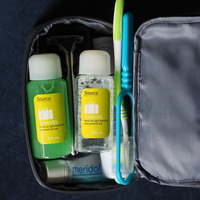
3. Travel-Sized Toiletries
If you’re traveling by plane and not planning to bring checked luggage with you, you’ll need to buy travel-size toiletries for your trip. This includes everything from toothpaste, to shampoo, to conditioner, to body wash, and anything else that you will need on your trip.
The largest size bottle of any liquid that you can bring with you in your carry-on is 100ml (3.4oz), no matter which airport you fly from in the world. You can usually find toiletries of this size in drugstores or department stores like Walmart.
If you can’t find them or you prefer bringing the same toiletries that you use at home, another solution is to buy empty refillable 100ml bottles that you can fill with whatever liquids you like. These can be found on Amazon for cheap!
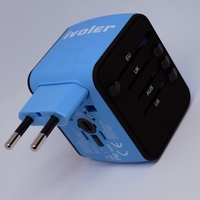
4. International Travel Adapters
If you’re traveling to a country that uses a different power outlet to the one yours uses, you will need to buy a travel adapter to be able to charge your devices. Check the Destination Guides for information on what kinds of power outlets the destination you are going to uses.
Keep in mind that travel adapters and travel converters are two separate things. A travel converter is used to convert the electricity that is sent to devices that are not dual-voltage (such as most hairdryers, shavers, and electric toothbrushes.)
Check to see if the devices you plan to bring are dual voltage and if they aren’t, I recommend looking into buying dual-voltage versions of them rather than a travel converter. They can be found on Amazon, along with international travel adapters.
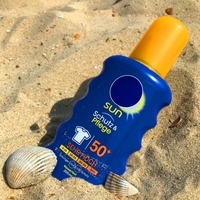
5. Sunscreen & Mosquito Repellant
If you’re traveling to a beach destination or any other destination where you will be in the sun most of the time, you will need sunscreen. This can also be bought when you arrive at your destination, but it’s almost always cheaper to buy it at home than in a tourist shop.
Similarly, if you’re going to travel to a mosquito-prone area, it is highly advised to bring mosquito repellent with you. Mosquito bites can be super irritating, but you also don’t want to risk getting a disease from a mosquito while on vacation. Consider also bringing a mosquito net if your hotel doesn’t have one or you plan to sleep outside too.
For other travel accessory suggestions, check out my Guide to the Top Travel Accessories.
Step 10: Pack your bags and check in
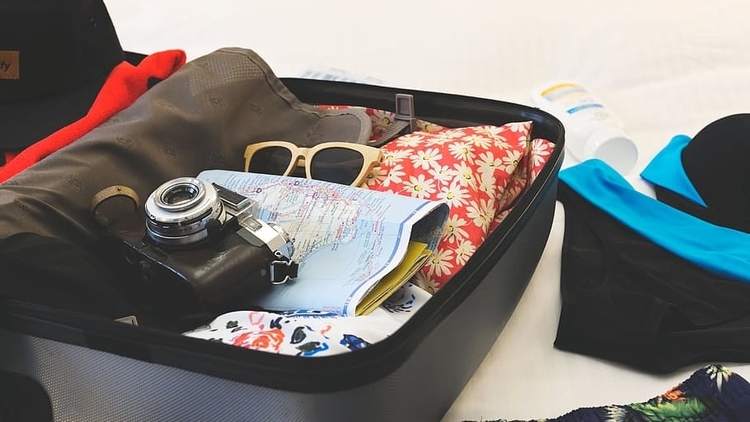
Packing is a bit of an artform. There are ways to fit more things in your bags, but in general, you should be trying to limit the amount of stuff you bring with you, especially if you are limited to certain bag sizes because of carry-on restrictions.
I tell you all about it in my Packing Guide, but here are some quick tips:
- Pack according to the weather in your destination. Don’t pack winter clothes if you’re going to a hot destination!
- Take 1 pair of socks and underwear for each day you will be traveling (i.e. 7 day trip = 7 pairs of each)
- Check out what your accommodation provides and pack anything that it doesn’t such as towels or dual-voltage hairdryers.
- Pack only what you really need. Many things can also be bought at your destination.
- Put any liquids over 100ml (3.4oz) in your checked luggage so they don’t get confiscated at the airport.
- Bring a change of clothes in your carry-on if you’re flying in the off-chance that the airline loses your luggage.
- Keep all your money and important documents with you in your carry-on bag and on your body.
Don't forget to check in for your flight!
Once you’re all packed, you should check in for your flight if you’re flying to your destination.
Most airlines these days allow online check-in 24 hours before your flight and some allow it even sooner. Double check when your airline will allows it and make sure you check in as soon as you can to get the best seats if you don’t already have your seats chosen and your airline allows you to select seats at check-in.
That being said, for some airlines (typically budget ones), you’re better off waiting until a few hours before your flight before checking in since they give the worst seats to those that check in sooner in an effort to convince them to pay for better seats. I talk more in detail about this in my Guide to Airline Seating.
If you can’t check in online, make sure to confirm your transport to the airport and arrive at least 1.5 hours before a domestic flight and 2 hours before an international one to give yourself enough time to check in, get through security, and get to your gate. This timing also gives you a buffer in case there’s a traffic jam or something on the way!
And that's all there is to it!
A lot of these steps still apply even if you book your travels via a travel agent or tour company so it’s good to be aware of them.
Let me know in the comments below if this guide helped you out in your travel planning! But if it all seems too overwhelming for you and you still prefer letting someone else take care of the travel planning, check out my Guide to Group Tours for another alternative.

